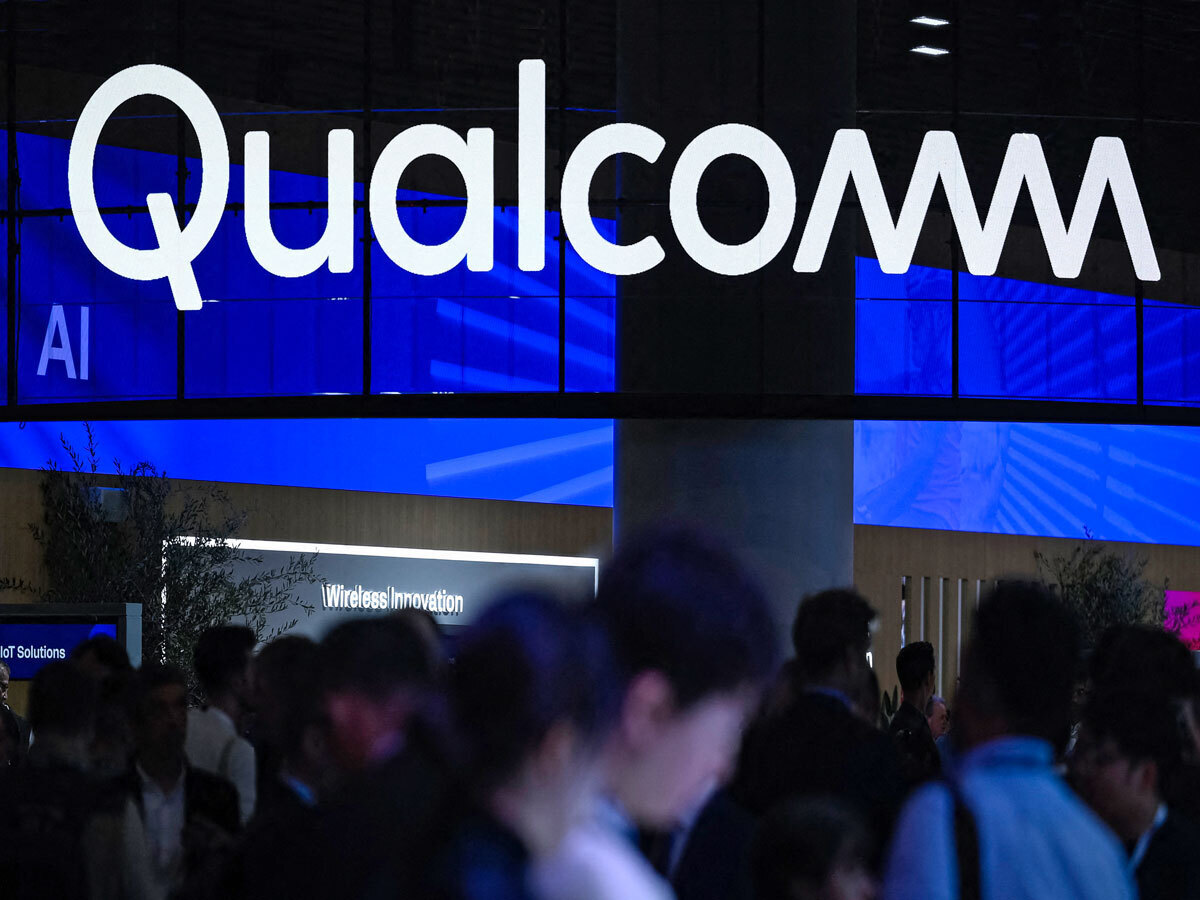Introduction
Founded in 1985, San Diego-headquartered Qualcomm [QCOM] is a multinational technology company that played a key role in the development and implementation of wireless technology, such as 2G. In recent years, the company has expanded into semiconductor design and manufacturing, and has an increasingly large footprint in fields such as artificial intelligence (AI) and virtual and augmented reality.
In this stock focus, we will examine Qualcomm’s recent moves and financial health, as well as the investment case for this key player in the global semiconductor ecosystem.
Qualcomm Expands into Data Centers
While Qualcomm’s revenue primarily comes from its patents and chip-making capacities — notably as the market leader in smartphone chips — it has set its sights on the booming AI data center segment. On June 9, it signed a deal to acquire British semiconductor firm Alphawave [AWEVF] for $2.4bn. The acquisition is set to close in Q1 2026 and represents a major step toward diversification, as clients such as Apple [AAPL] have increasingly turned to in-house chips.
The semiconductor firm is also expanding its global footprint, announcing the opening of an AI R&D center in Vietnam on June 11. The facility, part of Qualcomm’s global AI research division, is expected to focus on advances in generative and agentic AI solutions.
Companies like Meta [META] and Snap [SNAP] are racing to bring smart glasses to market, and Qualcomm is developing the hardware to support “wearable AI”.
At the Augmented World Expo in Long Beach in early June, the company demonstrated glasses that can run AI using its low-power Snapdragon AR1+ Gen 1 processor. The aim is to develop smart glasses that can be used independently of a smart phone.
Qualcomm reported Q2 2025 earnings on April 30, with revenue of $10.9bn representing a year-over-year increase of 17%, beating estimates of $10.6bn. Notably, revenue streams from automotive and internet of things applications grew 59% and 27% year-over-year, respectively.
Adjusted quarterly earnings also rose by 17% to $2.85, just north of analyst expectations of $2.82.
Revenue guidance for Q3 2025 was in the range of $9.9bn–10.7bn, reflecting a marginal year-over-year increase of 0.59% at the midpoint from the $10.24bn reported in Q3 2024.
Stock Performance
Despite moves to diversify and strong financial indications, Qualcomm stock has remained relatively stagnant over the past year, falling gradually from an all-time high of $230.63, reached on June 18, 2024.
Share prices bottomed out at $120.80 on April 7, amid a wider market selloff sparked by the announcement of US President Donald Trump’s “Liberation Day” tariffs. The stock has since crept back up, although a 5% dip followed its Q2 2025 earnings call on April 30, despite beating expectations.
As of June 16’s close, QCOM stock was trading at $156.87. The stock is down 25.55% in the past 12 months and up 3.29% in the year to date.
QCOM vs AVGO and AMD: Semiconductor Supremacy
As Qualcomm continues to diversify, many analysts have suggested it aims to compete with Broadcom [AVGO], which plays a leading role in the data center market. The larger company famously attempted to acquire Qualcomm in 2018, although the bid was blocked by the previous Trump administration, citing national security concerns, as Broadcom was still headquartered in Singapore at the time.
The semiconductor giant reported record Q2 revenue of $15bn on June 5, up 20% year-over-year and in line with analyst expectations. This figure was propelled by a 46% boost in AI revenue. Guidance for Q3 was set at $15.8bn, representing a 21% year-over-year increase.
Advanced Micro Devices [AMD] is another major player in the data center semiconductors market, with a market cap more in line with that of Qualcomm. AMD announced Q1 2025 earnings on May 6, with quarterly revenue of $7.44bn representing a year-over-year rise of 36%. This figure consisted of $3.7bn in data center segment revenue, up 57% year-over-year, and $2.9bn in client and gaming segment revenue, up 28% year-over-year, with a smaller contribution of $823m from the embedded segment. The company has also forecast a loss of $15bn through the end of the fiscal year due to chip export controls.
QCOM | AVGO | AMD | |
Market Cap | $172.24bn | $1.19trn | $204.93bn |
P/S Ratio | 4.17 | 21.34 | 7.44 |
Estimated Sales Growth (Current Fiscal Year) | 11.73% | 21.64% | 22.95% |
Estimated Sales Growth (Next Fiscal Year) | 1.66% | 19.55% | 17.76% |
Source: Yahoo Finance
While QCOM’s low P/S ratio could suggest it is undervalued in comparison to AVGO and AMD, both of which outstrip it in terms of market cap, its middling growth estimates could discourage investors in the medium term.
QCOM Stock: The Investment Case
The Bull Case for Qualcomm
While QCOM stock performance has been uninspiring in the past year, some analysts point to its strong financials as support for a growth case for the semiconductor stock. With aims to reach an equal revenue split between handsets and non-handsets segments by 2030, Qualcomm is increasingly focusing its efforts on diversification. The automotive segment is becoming another key revenue stream, with a target of $8bn in revenue by 2029.
On June 3, Bernstein SocGen Group analyst Stacy Rasgon reiterated an ‘outperform’ rating for the stock, with the target price of $185.00 representing an upside of 17.93%. Of the 36 analysts surveyed by Yahoo Finance in June, four rated the stock a ‘strong buy’, while 12 rated it a ‘buy’ with the high target price of $225.00 representing an upside of 43.43%.
Additionally, the stock has remained remarkably resilient during recent economic downturns. Although gains from this strategy may remain muted in the medium term, Qualcomm is dedicating resources to a wider array of segments to protect its revenue stream. “Our top priorities remain executing our diversification strategy and continuing to invest in areas that drive long-term value,” CEO Cristiano Amon said in the Q2 2025 earnings release.
The Bear Case for Qualcomm
Despite Qualcomm’s clear ambitions in the wider market, tariffs and the loss of key customers represent major headwinds for the firm, especially given concerns about the continued growth of handsets revenue, Qualcomm’s primary revenue stream.
On April 30, Qualcomm announced that Q3 revenue would fall short of Wall Street estimates, due to lower demand for smartphone chips and the impact of tariffs. In FY 2024, China accounted for 46% of the company’s total sales.
A number of investment firms lowered their price targets for QCOM stock following the announcement, including Baird and Susquehanna. Some 19 analysts surveyed by Yahoo Finance in June gave QCOM stock a ‘hold’ rating, with one rating it an ‘underperform’. The low estimate of $140.00 represents a downside of 10.75% from the June 16 close.
Another key consideration are reports that Apple will stop using the company’s modems in the second half of the year. The iPhone manufacturer accounted for 27% of Qualcomm’s revenue in Q2 2025, a figure that could fall to zero by 2027.
Conclusion
With major moves into the AI and data center segments, as well as chip production for AR headsets, Qualcomm has growth prospects in an increasingly diverse array of markets. However, tariff headwinds and falling revenue stream from smartphone customers such as Apple could hurt medium-term prospects before diversification efforts have time to take root.
Continue reading for FREE
- Includes free newsletter updates, unsubscribe anytime. Privacy policy





